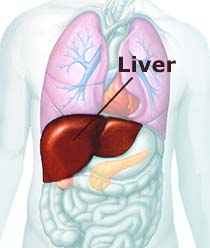Hepatitis D
Editor-In-Chief: C. Michael Gibson, M.S., M.D. [1]
Please Take Over This Page and Apply to be Editor-In-Chief for this topic: There can be one or more than one Editor-In-Chief. You may also apply to be an Associate Editor-In-Chief of one of the subtopics below. Please mail us [2] to indicate your interest in serving either as an Editor-In-Chief of the entire topic or as an Associate Editor-In-Chief for a subtopic. Please be sure to attach your CV and or biographical sketch.
Overview
Template:DiseaseDisorder infobox
| style="background:#Template:Taxobox colour;"|Template:Taxobox name | ||||||
|---|---|---|---|---|---|---|
| style="background:#Template:Taxobox colour;" | Virus classification | ||||||
|
Template:Search infobox Hepatitis D is a disease caused by a small circular RNA virus (Hepatitis delta virus or hepatitis D virus, HDV). HDV is considered to be a subviral satellite because it can propagate only in the presence of another virus, the hepatitis B virus (HBV). Transmission of HDV can occur either via simultaneous infection with HBV (coinfection) or via infection of an individual previously infected with HBV (superinfection). Both superinfection and coinfection with HDV results in more severe complications compared to infection with HBV alone. These complications include a greater likelihood of experiencing liver failure in acute infections and a greater likelihood of developing liver cancer in chronic infections. In combination with hepatitis B virus, hepatitis D has the highest mortality rate of all the hepatitis infections of 20%.
Genome structure and similarities to viroids
The HDV genome exists as a negative sense, single-stranded, closed circular RNA. Because of a nucleotide sequence that is 70% self-complementary, the HDV genome forms a partially double stranded RNA structure that is described as rod-like. With a genome of approximately 1700 nucleotides, HDV is the smallest "virus" known to infect animals. However, it has been proposed that HDV may have originated from a class of plant viruses called viroids. Evidence in support of this hypothesis stems from the fact that both HDV and viroids exist as single-stranded, closed circular RNAs that have rod-like structures. Likewise, both HDV and viroids contain RNA sequences that can assume catalytically active structures called ribozymes. During viral replication, these catalytic RNAs are required in order to produce unit length copies of the genome from longer RNA concatamers. Finally, neither HDV nor viroids encode their own polymerase. Instead, replication of HDV and viroids requires a host polymerase that can utilize RNA as a template. Based on indirect evidence, RNA polymerase II has been implicated in the replication of HDV. Normally RNA polymerase II utilizes DNA as a template and produces mRNA. Consequently, if HDV indeed utilizes RNA polymerase II during replication, it would be the only known pathogen capable of converting a DNA dependent polymerase into an RNA dependent polymerase.

The Delta Antigens
A significant difference between viroids and HDV is that, while viroids produce no proteins, HDV produces two proteins called the small and large delta antigens (HDAg-S and HDAg-L, respectively). These two proteins are produced from a single open reading frame. They are identical for 195 amino acids and differ only by the presence of an additional 19 amino acids at the C-terminus of HDAg-L. Despite having 90% identical sequences, these two proteins play diverging roles during the course of an infection. HDAg-S is produced in the early stages of an infection and is required for viral replication. HDAg-L, in contrast, is produced during the later stages of an infection, acts as an inhibitor of viral replication, and is required for assembly of viral particles.
Risk Factors
- Injection drug users
- Men who have sex with men
- Hemodialysis patients
- Sex contacts of infected persons
Health care and public safety workers Infants born to infected mothers (very rare) [3]
External links
Template:SIB Template:Baltimore classification Template:Viral diseases